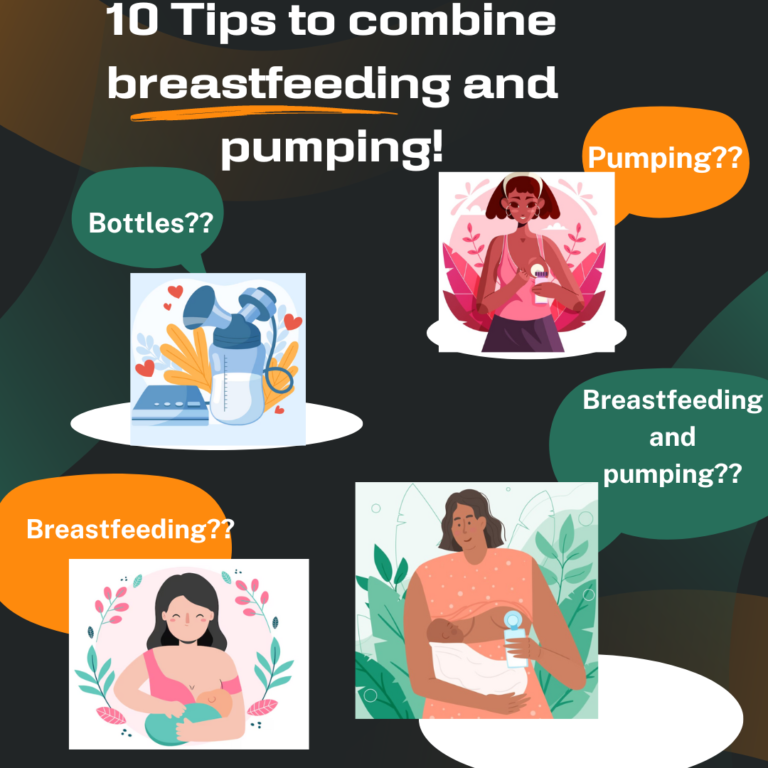Balancing Insulin Levels While Breastfeeding: A Comprehensive Guide for New Moms

Balancing insulin levels while breastfeeding is a crucial aspect of postpartum health for new moms. During pregnancy, the body undergoes significant hormonal changes to support the growing baby, and this can affect insulin sensitivity. After giving birth, understanding how to manage insulin levels is essential for both maternal well-being and the health of the newborn. In this blog, we will explore the important factors and strategies to help new mothers in balancing Insulin Levels While Breastfeeding.

Tips to balance the insulin levels while breastfeeding
The postpartum period, especially for moms with a history of gestational diabetes, is a time when insulin sensitivity can be a concern. Insulin is a hormone that regulates blood sugar levels, and its balance is vital for maintaining energy and overall health. Breastfeeding moms often wonder how they can ensure their insulin levels stay in check.
Here are some valuable tips:
- Stay Hydrated.
- Balanced Nutrition
- Control Portion Sizes
- Regular Meals and Snacks
- Fiber-Rich Foods
- Breastfeed on Demand
- Consult a Healthcare Professional
- Exercise Safely
- Supplements

What laboratory test should be taken to check insulin levels?
There are several laboratory tests that healthcare professionals can help in balancing Insulin Levels While Breastfeeding. The choice of which test to use may depend on the specific clinical situation and the information needed. Here are some common laboratory tests to assess insulin levels:
- Fasting Insulin Test: This test measures the level of insulin in your blood after an overnight fast. It is often used to assess baseline insulin levels and is helpful in diagnosing conditions like insulin resistance.
- Oral Glucose Tolerance Test (OGTT): An OGTT involves fasting overnight, then drinking a sugary solution, followed by multiple blood draws to measure blood glucose and insulin levels at various time points. This test helps evaluate how your body responds to a glucose challenge and can detect conditions like gestational diabetes.
- C-Peptide Test: C-peptide is a molecule produced when insulin is made in the body. Measuring C-peptide levels can help determine how much insulin your pancreas is producing. This test is often used in cases of diabetes or hypoglycemia.

- Random Insulin Test: A random insulin test measures insulin levels at any time of day, regardless of fasting status. This test can be useful in diagnosing conditions like insulinoma (a rare tumor that produces excess insulin) or assessing insulin levels in non-fasting states.
- Insulin Autoantibodies Test: This test is used to check for the presence of autoantibodies that target insulin. It is typically done to diagnose autoimmune conditions like type 1 diabetes.
- Fasting Blood Glucose and HbA1c Test: While these tests primarily measure blood glucose levels, they can indirectly provide information about insulin function. Elevated fasting blood glucose and high HbA1c levels may suggest insulin-related issues.
- Glucose Clamp Test: This is a research-based test used to precisely measure insulin sensitivity. It involves a continuous infusion of glucose and insulin to maintain blood glucose at a constant level. This test is not typically used in routine clinical practice.
Your healthcare provider will determine which test is appropriate based on your medical history, symptoms, and the specific information needed to assess your insulin levels and overall health. If you suspect insulin-related issues or have concerns about your blood sugar regulation, consult with a healthcare professional who can recommend the most appropriate tests for your situation.

Normal blood sugar levels during pregnancy chart india
Blood sugar levels during pregnancy, especially in India, should be carefully monitored to ensure the health of both the mother and the baby.
In India, like in many other parts of the world, the target blood sugar levels for pregnant women with gestational diabetes or preexisting diabetes are generally as follows:
- Fasting Blood Sugar (FBS):
- Normal Range: Less than 95 mg/dL
- Target for Gestational Diabetes: Less than 95 mg/dL
- Postprandial Blood Sugar (1-2 hours after meals):
- Normal Range: Less than 140 mg/dL
- Target for Gestational Diabetes: Less than 120 mg/dL
Pregnant women should also regularly monitor their blood sugar levels at home, typically using a glucometer, and follow a carefully planned diet and exercise regimen. Medications or insulin may be prescribed if necessary to maintain blood sugar levels within the target range.
Please note that these recommendations are general guidelines, and specific target levels may vary based on individual circumstances. It’s crucial for pregnant women to follow their healthcare provider’s advice and attend regular check-ups to ensure a healthy pregnancy.
Does breastfeeding lower blood sugar?
Breastfeeding can indeed help lower blood sugar levels in some women, particularly those who have had gestational diabetes during pregnancy. Here’s how breastfeeding can impact blood sugar levels:
- Hormonal Influence: When you breastfeed, your body releases specific hormones, including oxytocin and prolactin. These hormones can increase insulin sensitivity, allowing your body to use insulin more effectively to lower blood sugar levels. This can help prevent blood sugar spikes and maintain more stable levels.
- Caloric Expenditure: Breastfeeding burns calories. When your body expends energy to produce milk, it can lead to weight loss, which, in turn, can improve insulin sensitivity. This can be particularly beneficial for women who gained excess weight during pregnancy.
- Reduction in Insulin Resistance: Insulin resistance is a condition where the body’s cells do not respond well to insulin, leading to higher blood sugar levels. The hormonal changes induced by breastfeeding can help reduce insulin resistance, allowing blood sugar to be used more efficiently by the body.
- Postpartum Recovery: After giving birth, many women experience a drop in blood sugar levels, especially if they had gestational diabetes. Breastfeeding can help regulate these postpartum fluctuations and maintain stable blood sugar levels.

It’s important to note that while breastfeeding can have these positive effects on blood sugar levels, it may not eliminate the need for other measures in women with diabetes or a history of gestational diabetes. Dietary choices, maintaining a healthy lifestyle, and, in some cases, medication or insulin, may still be necessary to manage blood sugar effectively. Therefore, it’s essential for women with diabetes or a history of gestational diabetes to work closely with their healthcare provider to develop an individualized plan for managing their blood sugar during the postpartum period.
Conclusion
Balancing insulin levels while breastfeeding is a significant concern for new moms, especially if you have gestational diabetes during pregnancy. By staying hydrated, eating a balanced diet, and breastfeeding on demand, you can help your body manage insulin more effectively. Regular medical check-ups and consultations with healthcare professionals are essential to ensure a healthy postpartum experience. Remember, every mom’s journey is unique so it’s crucial to tailor your approach to your specific needs and consult with your healthcare provider for personalized guidance.
FAQ’s
Can breastfeeding help prevent gestational diabetes from returning after pregnancy?
While breastfeeding can have a positive impact on blood sugar levels, it cannot guarantee that gestational diabetes won’t return. Maintaining a healthy lifestyle, including diet and exercise, is essential to reduce the risk.
How long should I breastfeed to see an effect on my blood sugar levels?
The beneficial effects of breastfeeding on blood sugar levels can be immediate for some women, while others may take several weeks to notice a significant difference. It varies from person to person.
Can I breastfeed if I have type 1 or type 2 diabetes?
Yes, women with type 1 or type 2 diabetes can breastfeed. However, it’s important to work closely with your healthcare provider to manage blood sugar levels, adjust medication if needed, and ensure a safe and healthy breastfeeding experience for both mother and baby.

















+ There are no comments
Add yours